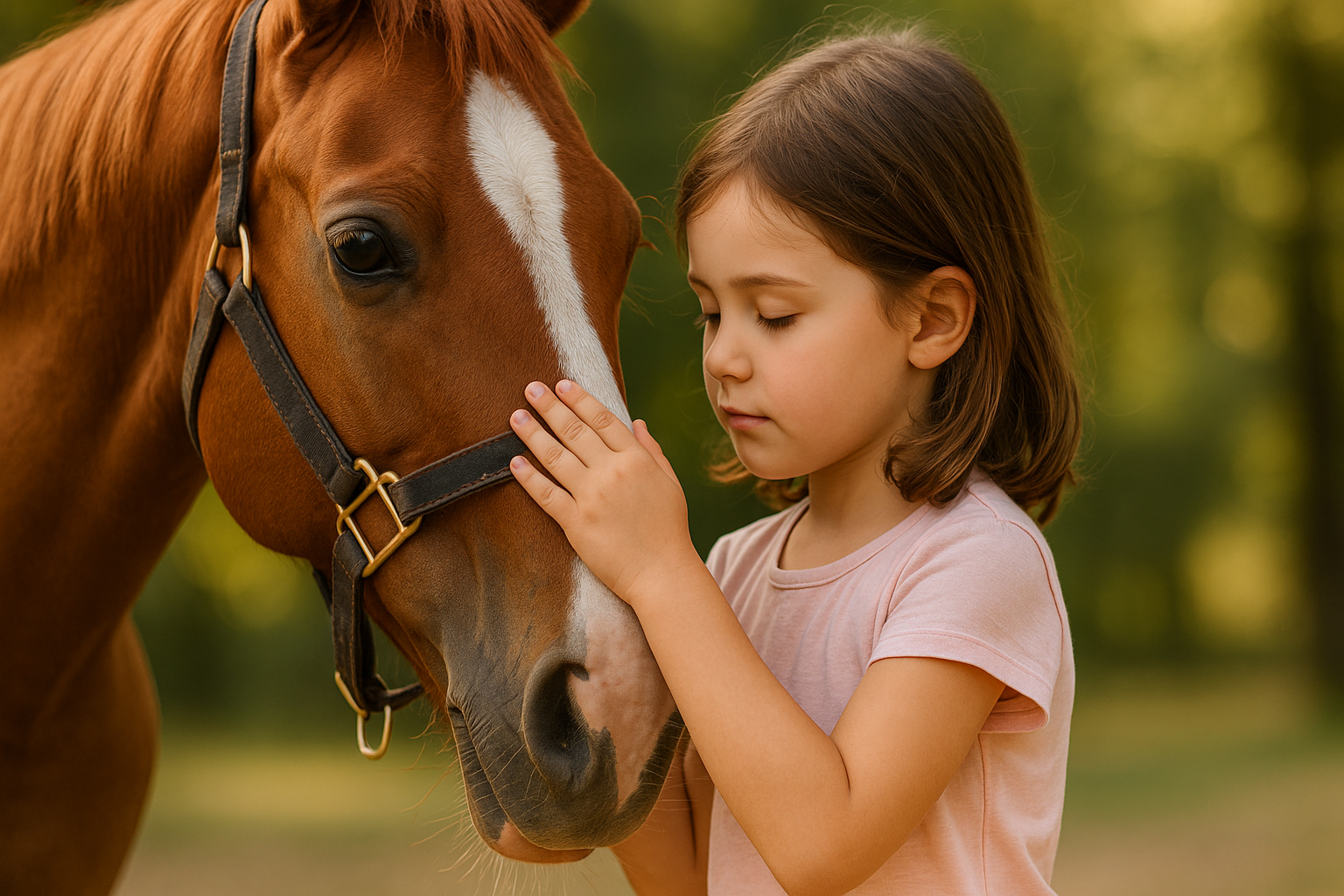7 Signs of Progress in Equine-Assisted Service
-
24 July, 2025
-
6:43 am
-
As a parent of a child with additional needs, you’re constantly making decisions — about schools, specialists, therapies, and support strategies. When your child begins equine-assisted services, it’s natural to ask:
“Is this actually helping? And how will I know?”
In this article, we’ll help you identify clear, real-world indicators that your child is progressing — even if the changes are subtle. You’ll learn:
- What results you can reasonably expect
- How to track small but powerful changes
- What to look for during and between sessions
- What differentiates meaningful equine-assisted work from superficial experiences
🤔 What Counts as “Progress” for a Child with Special Needs?
It may not always be dramatic. Progress might look like:
- 5 more seconds of focus
- 2 fewer emotional outbursts per week
- One new attempt at eye contact
- Voluntarily brushing the horse
- A small act of self-regulation
These may seem invisible to the outside world, but for you and your child, they are foundational.
🧭 7 Signs That Equine-Assisted Services Are Having an Impact
✅ 1. Consistent Connection with the Horse
Look for:
- Your child approaches the horse with more confidence
- They develop rituals — waving, saying the horse’s name
- You notice a genuine bond forming
This shows emotional awareness and growing empathy — especially powerful for children who struggle with connection.
✅ 2. Anticipation and Understanding of Session Structure
Look for:
- They prepare for what’s coming next
- They recall routines — such as brushing or leading
- They engage without constant prompting
This shows development in sequencing, memory, and comfort within structure — essential cognitive building blocks.
✅ 3. Improvements in Balance, Posture, and Coordination
Look for:
- Stronger posture while walking or riding
- More coordinated movement while grooming or helping
- Increased body awareness
Physical development fuels mental development — motor engagement activates neurological growth.
✅ 4. Emotional Regulation Before and After Sessions
Look for:
- Agitation before the session shifts to calm afterward
- Meltdowns or shutdowns become less frequent
- Mood stabilizes more quickly
This suggests your child’s nervous system is being soothed, creating space for learning and confidence.
✅ 5. Rising Independence and Initiative
Look for:
- They begin performing familiar tasks without help
- They say, “I want to do it myself”
- They show pride in their role during the session
This shift from passive participation to active ownership is a powerful sign of inner motivation.
✅ 6. Positive Social Interactions
Look for:
- Your child becomes more open to instructors or peers
- They show signs of trust and comfort
- They begin transferring positive behaviors from the arena to other settings
The horse can be a bridge that reopens your child to safe human connection.
✅ 7. They Want to Come Back
Look for:
- They express excitement about future sessions
- They show disappointment when a session is canceled
- They speak or sign about the horse between visits
True progress is rooted in emotional safety — and no one can fake enthusiasm.
⚠️ What If You Don’t See These Changes Yet?
Consider:
- How much time has passed? (Some children need several months)
- How consistent are the sessions? (Weekly is ideal for momentum)
- Is the structure clear and supportive?
- Is the environment adapted to your child’s unique needs?
- Are you getting regular feedback from the facilitator?
🧩 What Makes a Program Truly Effective?
Be cautious with programs that:
- Emphasize “fun” over structure
- Do not track or share progress
- Offer no space for questions or concerns
- Lack intentionality and repetition
Equine-assisted services aren’t about entertainment. They are a structured process that blends emotional safety, physical engagement, and relational growth.
💬 What We Recommend to Parents
- Keep a simple journal of what you observe
- Stay in communication with the instructor
- Value small wins — even smiles, attention, or gestures
- Allow time — sustainable progress isn’t rushed
📩 Want to Know If This Is Right for Your Child?
Click here to contact us and we’ll help you understand whether equine-assisted services are a good fit for your child and family.
Sometimes, the most powerful signs of growth aren’t in test scores — but in eye contact, small steps forward, and the quiet connection between a child and a horse.

